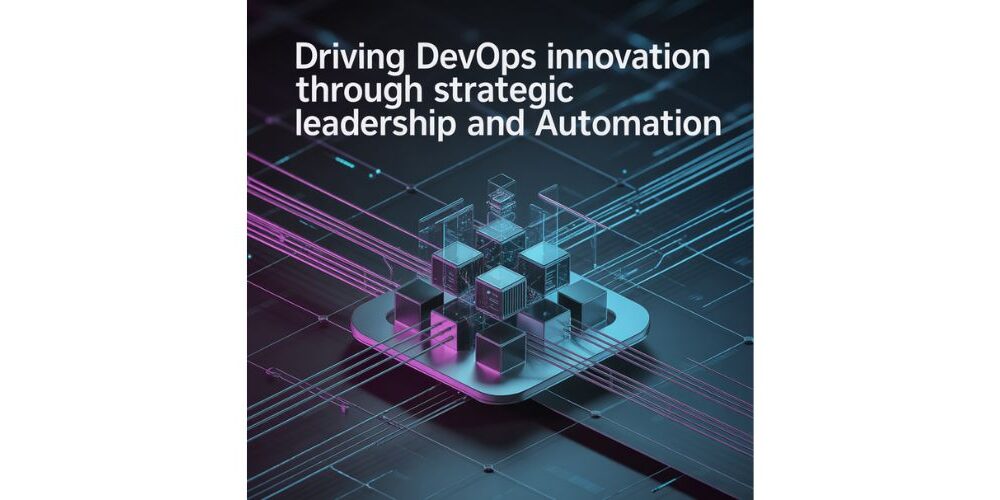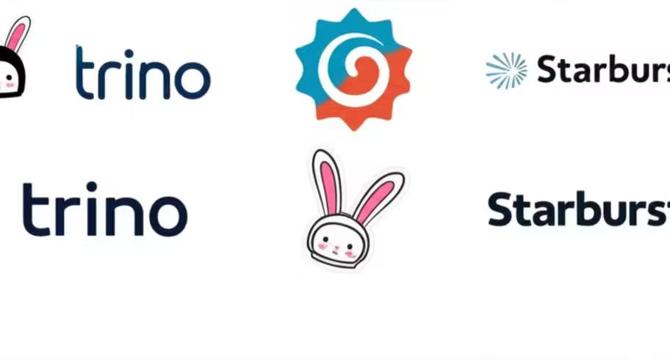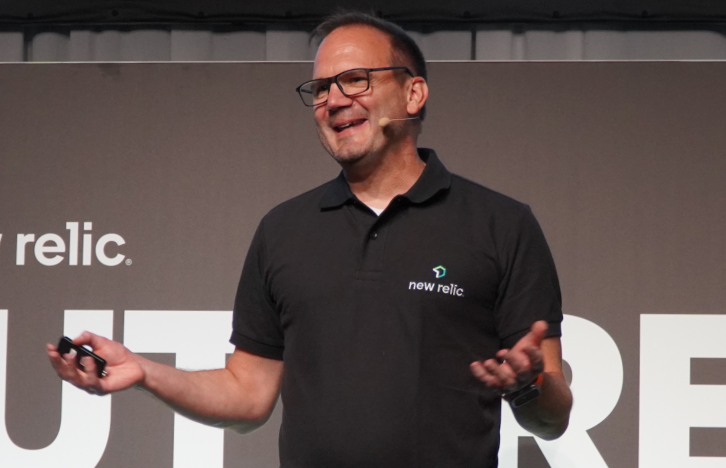Devops News
Dev
143

Image Credit: Dev
📦 Release Branching Strategy — Simple Git Example for Beginners
- Release branching strategy in Git helps manage multiple versions of a web app concurrently.
- The use case involves supporting v1 for existing users and developing v2 with new features in a clean and safe way.
- Steps for implementing release branches in Git are outlined, including initializing the project, creating separate release branches for v1 and v2, adding new features in v2, and applying a hotfix in v1.
- Benefits of release branching include easy version support and isolation of hotfixes from new features, while potential drawbacks include branch-heavy repositories and the need for discipline in versioning.
- A bonus tip is provided for merging a hotfix from v1 into v2 to ensure consistency across versions.
- The real-world example illustrates how different teams can work on different branches simultaneously without conflicts.
- The detailed guide aims to help beginners understand and implement release branching in Git effectively.
- Release/v1 represents the stable production branch with hotfixes, while release/v2 focuses on new feature development.
- Managing both versions in parallel allows for smooth development and maintenance.
- Release branching is particularly useful for enterprise and versioned applications.
- The tutorial encourages interaction and feedback from readers to enhance their learning experience.
- The article also hints at Trunk Based Development Branching Strategy as a related topic for further exploration.
Read Full Article
8 Likes
Sysdig
156

Top 15 Kubectl plugins for security engineers in 2025
- Kubectl plugins are essential for security teams in managing complex Kubernetes environments by extending kubectl functionality.
- These plugins help with RBAC auditing, network tracing, secrets management, incident response, and compliance enforcement.
- Important considerations before using plugins include maintenance status, alignment with security policies, and data exposure risks.
- Key plugins in 2025 include access-matrix, rolesum, kubectl-capture, ksniff, np-viewer, kubectl-whisper-secret, cert-manager plugin, kubelogin, and stern.
- Each plugin addresses specific security needs such as RBAC visualization, syscall tracing, network policy validation, secret encryption, and OIDC authentication.
- Some plugins like kubectl-trace and kubectl-ssm-secret may have limited maintenance and need careful testing in modern clusters.
- Plugins like inspektor-gadget and cert-manager plugin offer comprehensive observability and TLS certificate management, respectively.
- Plugins such as kube-policy-advisor and rbac-tool aid in policy enforcement, access analysis, and RBAC configuration.
- Overall, kubectl plugins play a crucial role in enhancing security measures without impeding operational efficiency in 2025.
Read Full Article
9 Likes
Dzone
82

AI-Native Platforms: The Unstoppable Alliance of GenAI and Platform Engineering
- Building developer platforms for AI-native teams is a complex art requiring a delicate balance.
- Platform Engineers aim to remove obstacles and accelerate innovation for development teams.
- The next phase of platform evolution involves Generative AI co-building and co-managing with humans.
- This shift represents a significant paradigm change where AI becomes a partner in redefining the development experience.
- AI is not just the final product but an ally actively reshaping the development process.
- The challenge is to transform platforms into intelligent, self-optimizing ecosystems.
- The goal is to achieve exceptionally high productivity and frictionless innovation.
Read Full Article
4 Likes
Dev
317

Image Credit: Dev
Live and Online: Our Food Waste Reduction Platform is Almost Ready!
- A major milestone has been reached as the backend API and database for a food waste reduction platform are now live on DigitalOcean.
- The project started as a university endeavor and has evolved into a platform connecting businesses with surplus food to those in need.
- Backend (Laravel) and MySQL database are deployed, with RESTful API endpoints tested and ready for production.
- The frontend (React) is near completion, with UI/UX polishing remaining.
- End-to-end flow has been validated locally, with a few bugs to be fixed and performance tuning left to do.
- Final usability testing and feedback collection from early testers are on the to-do list.
- The project has been a significant learning experience, covering technical aspects like Laravel, React, deployment, and testing, as well as understanding how to create a real-world impact.
- The live app can be accessed at https://ndihmo-tjetrin.netlify.app/.
- The developer is open to feedback and thoughts from readers.
- The project showcases the journey from a university initiative to a nearly complete platform for food waste reduction.
Read Full Article
19 Likes
Discover more
- Programming News
- Software News
- Web Design
- Open Source News
- Databases
- Cloud News
- Product Management News
- Operating Systems News
- Agile Methodology News
- Computer Engineering
- Startup News
- Cryptocurrency News
- Technology News
- Blockchain News
- Data Science News
- AR News
- Apple News
- Cyber Security News
- Leadership News
- Gaming News
- Automobiles News
Solarwinds
318

Image Credit: Solarwinds
Exploring the Cloud, AI, and More at AWS Summits
- AWS Summits in London, Stockholm, and Sydney brought together IT professionals for learning and networking sessions.
- London event featured over 190 sessions and highlighted AI as a key focus.
- Discussions in Stockholm included cloud migration and building cultures of experimentation.
- Sydney Summit saw positive energy, partner meetings, and discussions about tech advancements.
- Highlights at Sydney included the launch of a new SaaS AWS instance by SolarWinds.
- Interest in AI was evident across all three events, focusing on real-time visibility and AI-powered insights.
- Future plans include attending AWS Summits in Johannesburg, Brazil, and Mexico before aiming for AWS re:Invent in Las Vegas.
- AWS provides building blocks and tools for secure development, optimizing workloads, and accelerating migrations.
- Cultural aspects of experimentation and reliability in Gen AI projects were also discussed.
- Networking opportunities were abundant, connecting with partners, customers, and potential clients.
- Excitement and bullish outlook were noted among attendees at the various Summits.
- Positive feedback and interest in SolarWinds offerings, including ITSM and Observability solutions, were received.
- The article was originally posted on the SolarWinds Blog, capturing the essence of AWS Summit experiences and technological discussions.
- AWS re:Invent Summit in Las Vegas is on the horizon for attendees, scheduled from December 1-5.
- AI adoption, cloud migration, and tech innovation were among the core topics discussed and explored during the AWS Summits.
- The summits offered insights into enhancing every aspect of the cloud journey and ensuring operational resilience and control.
- Various industry professionals, including senior executives and channel managers, shared their experiences and practical insights during the events.
Read Full Article
19 Likes
Dev
422

Image Credit: Dev
Introduction to Cryptography: Basic Blocks
- Cryptography plays a vital role in security protocols like TLS, SSH, and VPNs for encrypting communication.
- The article discusses the author's realization of lacking deep understanding of cryptography despite prior experience.
- The series aims to delve into the fundamentals of cryptography starting with symmetric encryption and probability.
- Symmetric encryption ensures message security through shared secret keys for encryption and decryption.
- Historical ciphers like Caesar, Substitution, and Vigenère were broken due to lack of true randomness.
- Probability distributions and events are crucial in assessing cryptographic risks and security.
- Random variables and independence help quantify cryptographic security and prevent predictability.
- XOR is highlighted as a key operation in symmetric encryption due to its reversibility and simplicity.
- Using XOR ensures no information loss in encryption compared to OR and AND operations.
- The article emphasizes the importance of understanding these building blocks for establishing secure cryptographic systems.
- The article is eligible for web story generation.
Read Full Article
25 Likes
TechBullion
111

Image Credit: TechBullion
Mahesh Babu Jalukuri: Driving DevOps Innovation Through Strategic Leadership and Automation
- Mahesh Jalukuri is a Senior DevOps Engineer known for his expertise in Azure technologies and leadership in automation and scalability.
- He holds a Master's in Computer Science, providing a foundation in cloud technologies and systems management.
- Throughout his career, Mahesh has excelled in enterprise IT systems, cloud infrastructure management, and automation efforts.
- His strategic leadership and technical mastery have driven innovations in cloud migration, CI/CD pipelines, and infrastructure automation, positioning him as a key figure in DevOps engineering.
Read Full Article
4 Likes
Hackernoon
169

Image Credit: Hackernoon
Master Starburst Monitoring with Grafana and Trino Plugin
- Starburst is a distributed SQL engine for querying data across multiple sources.
- Challenges in monitoring Starburst clusters due to limited native metrics.
- Solution involves Grafana dashboards, Grafana Trino Plugin, Prometheus, and JMX Exporter.
- Additional metrics like JVM, query metrics, resource usage per cluster needed for deep monitoring.
- Architecture includes JMX Exporter, Prometheus, Grafana, and Grafana Trino Plugin.
- Grafana Trino Plugin allows running SQL queries on Starburst and visualizing results.
- Features of Grafana Trino Plugin include authentication options, raw SQL editor, and macro support.
- Setup involves enabling JMX Exporter, configuring Prometheus, installing Grafana Trino Plugin, and building dashboards.
- Benefits include monitoring multiple clusters, live refreshing queries, full metrics, and adding alerts.
- Conclusion recommends using JMX Exporter, Prometheus, Grafana, and Grafana Trino Plugin for effective Starburst monitoring.
Read Full Article
10 Likes
Dev
113

Image Credit: Dev
How DNS Works (Recursive Resolution and Stub Resolvers)
- DNS (Domain Name System) translates human-readable names to IP addresses when accessing web addresses or service names.
- The process involves a stub resolver sending queries to a recursive DNS resolver, which then iterates through root, TLD, and authoritative nameservers.
- Stub resolvers forward queries to recursive resolvers, which return cached results or perform full lookups.
- System DNS settings control the resolver used at the system level, with options like /etc/resolv.conf on Unix/Linux or systemd-resolved for modern Linux systems.
- Consul, a service networking solution, offers a DNS interface for service discovery, where registered services can be resolved via DNS queries.
- Consul's DNS interface allows resolving services like 'web' by querying 'web.service.consul' and responds with IP addresses for healthy instances.
- Consul's DNS supports SRV records, providing port numbers along with the service address.
- Consul is beneficial in dynamic, microservices-based environments for features like dynamic service discovery, cross-data center discovery, and health checks.
- LiveAPI simplifies documentation of backend APIs by generating interactive API documentation for easy search and execution directly from the browser.
- With LiveAPI, users can quickly document all backend APIs and ease the burden of manual documentation creation.
Read Full Article
6 Likes
Siliconangle
1.4k

Image Credit: Siliconangle
GitLab’s revenue outlook comes up short and its stock gets hammered
- GitLab Inc. faced a dip in its stock price after falling slightly short on its sales guidance while increasing full-year profit outlook.
- In the first quarter, GitLab reported earnings of 17 cents per share, surpassing Wall Street's target of 15 cents, with revenue rising by 27% to $214.5 million.
- The company reduced its net loss to $36.2 million from $55.4 million in the year-ago period, functioning as a major player in the DevOps market.
- Despite the positive financial performance and raised earnings forecast, GitLab's stock fell over 11% in after-hours trading, bringing its year-to-date decline to over 13%.
Read Full Article
27 Likes
Dev
265

Image Credit: Dev
The Hidden Cost of Developer Context Switching: Why IT Leaders Are Losing $50K Per Developer Annually
- Context switching, shifting attention between tasks, costs IT companies $50,000 per developer annually.
- Developers need time to refocus after switching tasks, averaging 23 minutes and up to 45 minutes for complex coding.
- Calculating the cost: With 12-15 context switches daily, each lasting 25 minutes, the annual cost per developer is $52,000.
- Context switching leads to decreased efficiency, increased bugs, and other hidden costs like delayed releases and developer burnout.
- It disrupts cognitive load, flow state, and results in quality degradation, technical debt accumulation, and security vulnerabilities.
- Common triggers include meeting overload, communication chaos, project juggling, and reactive work culture.
- Impact studies reveal productivity gains of up to 35% and faster delivery with reduced context switching.
- Strategies to minimize context switching include time blocking, batching tasks, clear communication protocols, and optimized project management.
- Teamcamp offers solutions through centralized information hubs, organized task management, and efficient communication and collaboration tools.
- Reducing context switching can lead to immediate productivity increases, improved code quality, and long-term benefits like reduced turnover costs and innovation acceleration.
Read Full Article
15 Likes
Dev
108

Image Credit: Dev
10 Cheap (or Free) Ways to Deploy Docker Containers
- There are budget-friendly (even free) platforms available to host containerized applications.
- List of 10 cheap ways to deploy Docker containers with pros and cons for each option like Render, Docker Hub, Fly.io, Railway, Koyeb, Glitch, CapRover, Github Codespaces, Google Cloud Run, and Heroku.
- Options include support for custom Dockerfiles, Docker Desktop Extensions, deploying apps near users, Dockerfile support, instant rollback, Git integration, and more.
- From full-stack apps to lightweight microservices, there are solutions for every use case from platforms offering managed simplicity to self-hosted tools providing more control.
Read Full Article
6 Likes
Dev
26

Image Credit: Dev
Inside Kubernetes: How ClusterIP Services Route Traffic to Pods With Real-World Debugging Case Study
- ClusterIP is the default service type in Kubernetes that enables intra-cluster communication by exposing a virtual IP address.
- Understanding how ClusterIP routes traffic internally is crucial for resolving production outages quickly.
- Real-world case studies illustrate common ClusterIP issues such as label mismatches and backend unreachability.
- Best practices to avoid ClusterIP failures include using readiness probes, monitoring Endpoints objects, auditing NetworkPolicies, enabling kube-proxy alerts, and aligning pod labels and selectors.
Read Full Article
1 Like
Hackernoon
422

Image Credit: Hackernoon
This Lightweight Tool Flags Breaking Changes Before You Ship
- relimpact is a lightweight CLI tool designed to help understand changes between two Git refs in modern Go projects.
- It provides features like API Diff to track breaking public API changes, Docs Diff to highlight meaningful content changes in Markdown files, and Other Files Diff to group file changes by extension.
- relimpact is designed for Release PR reviews, generates Markdown reports for GitHub Releases, Slack, or changelogs, and can be integrated with GitHub Actions, GitLab CI, or used locally with no server required.
- The tool uses Go type system and AST parsing for API changes, section-aware diff for Markdown files, and groups file changes by type, offering a release-ready summary for easier review of important changes.
Read Full Article
25 Likes
Microsoft
156

Image Credit: Microsoft
June Patches for Azure DevOps Server
- Microsoft is releasing patches for Azure DevOps Server.
- Customers are advised to use the latest version for security reasons.
- Azure DevOps Server 2022.2 Patch 6 is recommended for users of version 2022.2.
- The patch includes enhancements for Test Plans like exporting test cases with custom column option and copying test plans.
Read Full Article
9 Likes
For uninterrupted reading, download the app